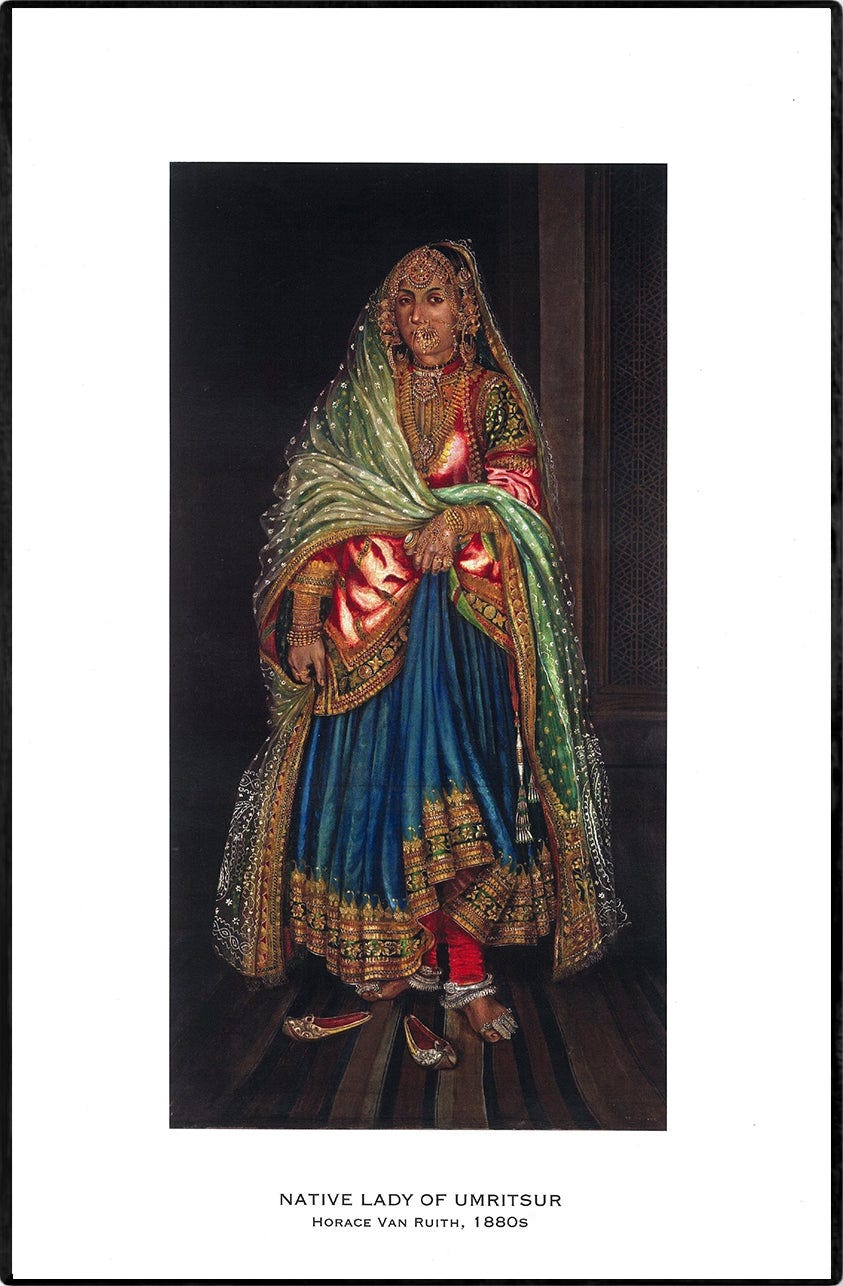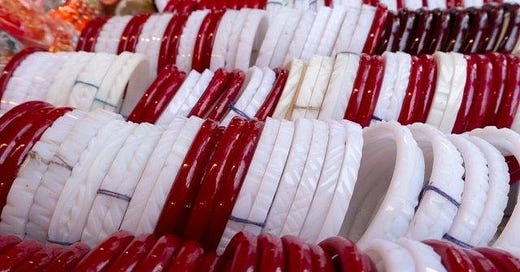Welcome to the Brown History Newsletter. If you’re enjoying this labor of love, please do consider becoming a paid subscriber. Your contribution would help pay the writers and illustrators and support this weekly publication. If you like to submit a writing piece, please send me a pitch by email at brownhistory1947@gmail.com.
Don’t forget to check out our SHOP and our Podcast.

Shankha Pola Bangles: A Legacy of the Ancient World
Weddings constitute a major part of South Asian cultures. Popular movies, books, and even chunks of our lives have been built around getting married in grandeur. So, it isn’t surprising that some of the important elements of weddings across South Asia might have retained their characteristics from ancient cultures. A lot of these components are, in fact, symbolic—of wealth, long married life, fertility, and much more. In parts of India and Bangladesh, married women from certain Hindu cultures wear white conch shell bangles - Shankha - usually accompanied by a red coral bangle - Pola. Mostly worn by women of the Bengali community, these bangles are symbolic of their marital status. While we might have spotted these in Bollywood movies and wanted to flaunt them as kids growing up in the culture, these have quite a long history.
The coral bangles are associated with the fishing communities spread over the long coastline. The legacy of shell bangles, however, goes back as far as the Bronze Age. Jewelry historians have even discovered some interesting parallels between these modern shell bangles and the burial ornaments of the oldest civilization in the region - the Indus Valley Civilization - which spread over parts of present-day India and Pakistan.





